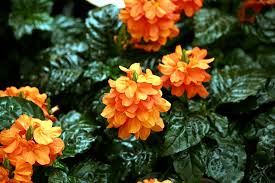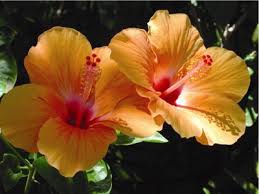In this new post, I was planning to write about topics related to Botany--I thought I could share some helpful tips on what I finished in college. But I really don't know where to start...Plant nomenclature perhaps? Pollination? Just then I thought of how many people are interested on how to multiply their well-loved plant treasures but just do not have an ounce of idea on how to do it. This made me write about the ways plants can be reproduced through using various propagation techniques.
In this first part, I will teach you on propagating plants through stem cuttings. Some of you may already know this common way of propagating flowers but for those who don't know, this will help you.
Stem cuttings:
It is what it says- severing a part of the stem and planting it in the pot or garden. You may choose to cut either soft terminal cuttings or partially hard cuttings.
1. Make sure you make a clean cut (jagged cut attracts infection). Use a sharp pruning shears. Cut at around 60degrees angle--this will provide a wider surface area for water to get in. Cut precisely as you would cut a stem from a rose for a cutflower display.
2. Dip the cut end in a rooting hormone. Speaking from experience, when I did stem cuttings of
Bougainvillea sp. in my Asian hometown, I did not have rooting hormone. What I did was I made a precise cut (60degrees angle) and chose a potting mix rich in humus and is well-drained. I placed the cuttings to establish in a shady area. After I noticed significant shoot growth, I then move it to a brighter area so that it will be exposed more to the sun. Bougainvilleas and
Ixora chinensis love the sun as well as hibiscus. But in the temperate zones like Canada, these plants must be grown indoors.
Cutting stems from bougainvilleas are done by cutting the soft stems in summer and semi-hard stems in winter (getting soft stems in summer promotes growth from the main plant and getting hard stems in winter will help prune the mother plant to be ready for a new growth in spring).
3. Choose a potting medium well suited for the cuttings. Put the cuttings in an area that does not get direct sunlight to give it chance to make new growth. Take note that some plants--like bougainvillea--some of its leaves will die back. Do not worry, just water the plant enough to make the topsoil moist. Water sparingly after then so as to keep it evenly moist but not soggy. Once significant growth is noticed, transfer the plant to an area where it receives more hours in the sun--or in the shade (like begonias) as per light requirements.
Plants Propagated by Stem Cuttings
 |
| Gardenia jasminoides (gardenia) |
 |
| Ixora chinensis
|
 |
| Camellia sinensis |
 |
| Crossandra infundibuliformis (firecracker flower) |
 |
Bougainvillea glabra and other varieties
|
 |
| Rosa (rose family) |
 |
| Jasminum grandiflorum (jasmine) |
 |
| Portulaca grandiflora |
 |
Hibiscus rosa-chinensis (hibiscus flower)
Some of the plants shown here are tropical plants, however they can be grown indoors like in a greenhouse where temperature is controlled.
Disclaimer:
I only own one of these photos. I used these as graphic examples of the flowers I talk about.
|




Beautiful site and I love the photos. Do you have any experience with hydroponic gardening systems? It works best if you live in a crowded area or city, with little yard or garden to grow. What are your opinions?
ReplyDeleteI've done it in my university days. We put samples of...hmm I cant remember what plant, but yes we mixed in some nutrients like potassium, agar (my memory is hazy). The plants were growing in test tubes- in a lab setting. Hydroponic gardening is very handy when you are in a cramped space. You just have to keep the nutrients in steady supply though for healthy growth. Thanks for the comment. I've never expected someone to comment on my blog - it's been a while since I last wrote an entry here.
DeleteWhile the admin of the web site is working, no question soon it will likely be famous, due to its feature blogs. Artificial Grass Bramhall
ReplyDelete